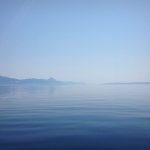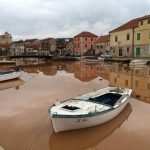The Croatian coastline is, if you think about it slightly out-of-the-box, every pirate’s dream come true.
The Croatian coastline is extremely irregular and indented, it offers numerous locations for you to hide (if you’re a pirate, or just a regular sailor searching for some well-earned privacy) and observe the traffic. Although to be fair, its location is what made it a relevant piracy centre in the world in the Old and Middle ages. That was the time when most maritime traffic took place in the Mediterranean, and as Venice gained prominence, the merchant traffic between Constantinople (and other more distant cities on the Mediterranean) and Venice was forced to go through the Adriatic – and our side of the coast is much more indented and safer to navigate than the Italian coastline. Of course, anyone who has ever seen any pirate movie is also aware of the fact that those circumstances are also an ideal setup for pirates as well.
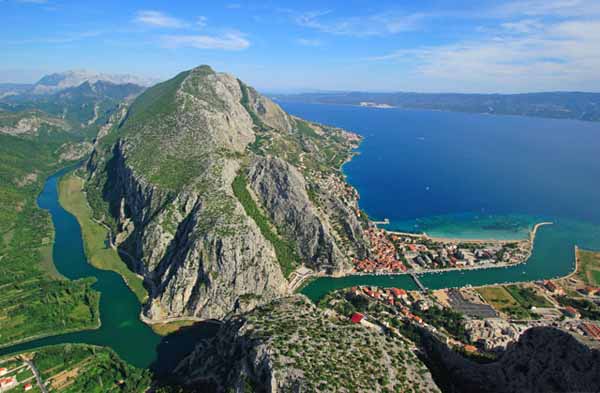
Credit: Sightseeing Croatia; view of the Cetina River flowing into the Adriatic – the perfect escape for pirates.
During the historic period we are talking about, and that is in the 10th – 13th century, piracy was not frowned upon as it is today, it was an absolutely legitimate business for the brave. On the Dalmatian coast, the tradition of piracy goes back to the Illyrian tribes that used to live here before the Croatians arrived. Venetians are known to be wary of the pirates from the Neretva basin, and in 887 AD, a famous battle near Makarska between the Venetians and the so-called Narentine pirates took place, and during which Venetian Duke Pietro Candiano was killed and his fleet sunk. After this battle, Venetians are believed to have been paying for the freedom to travel and freely trade in the Croatian Adriatic.
History has taught us that peace doesn’t last long, especially in the Mediterranean, and it was again disturbed by the rise of the Omiš pirates, which coincided with the arrival and prominence of the Kačić family in the 12th century. A large, noble and ambitious family, they ruled over a large part of southern and central Dalmatia; Omiš, islands of Brač, Hvar, Vis and Korčula and held titles of Dukes. Although they were officially subjects of the Hungarian-Croatian king, they were allowed a large autonomy, which they used (mostly) to support and organize piracy in their “dominion”; the 12th and 13th centuries are considered to be the peak-piracy period in Omiš history. They controlled most of the maritime traffic on the eastern Adriatic coast, and both Venetian and Dubrovnik merchants were forced to pay for safe passage through the region they controlled. They were extremely skilful at sea, expert shipbuilders and seamen and were almost invincible, because they knew exactly how to take advantage of the natural resources that supported their way of living. How far they were willing to go in their efforts to fully control the traffic is best explained by the fact that they were accused of attacking the ships which took the Crusaders to the Palestine, and that even the Pope Honorius III started a war with the pirates – and lost! Every peace agreed upon with the Kačić Dukes and Omiš pirates was short-lived, and it took almost two centuries to defeat them and establish safer passage along the Adriatic coast. The Kačić’s were finally defeated and expelled from Omiš after the defeat from the Venetians in 1287, and after that the Šubić family ruled there. They were less inclined to openly support piracy, so it was still present but it illegal and much less prominent. In 1444 the town of Omiš was occupied by the Venetians, and that marked the end of the tradition of piracy in the region.
There are still two living witnesses to the pirates of the Omiš past, the two fortresses Mirabella (Peovica) and Starigrad (Fortica), on perfect locations to give the pirates view of the huge part of Central Dalmatia, including sea around the islands Brač, Hvar and Šolta and the confluence of the Cetina River. You can still visit both fortresses – Mirabella is very close to the historic centre of the city, while Starigrad is an hour’s walk from it – uphill, obviously.
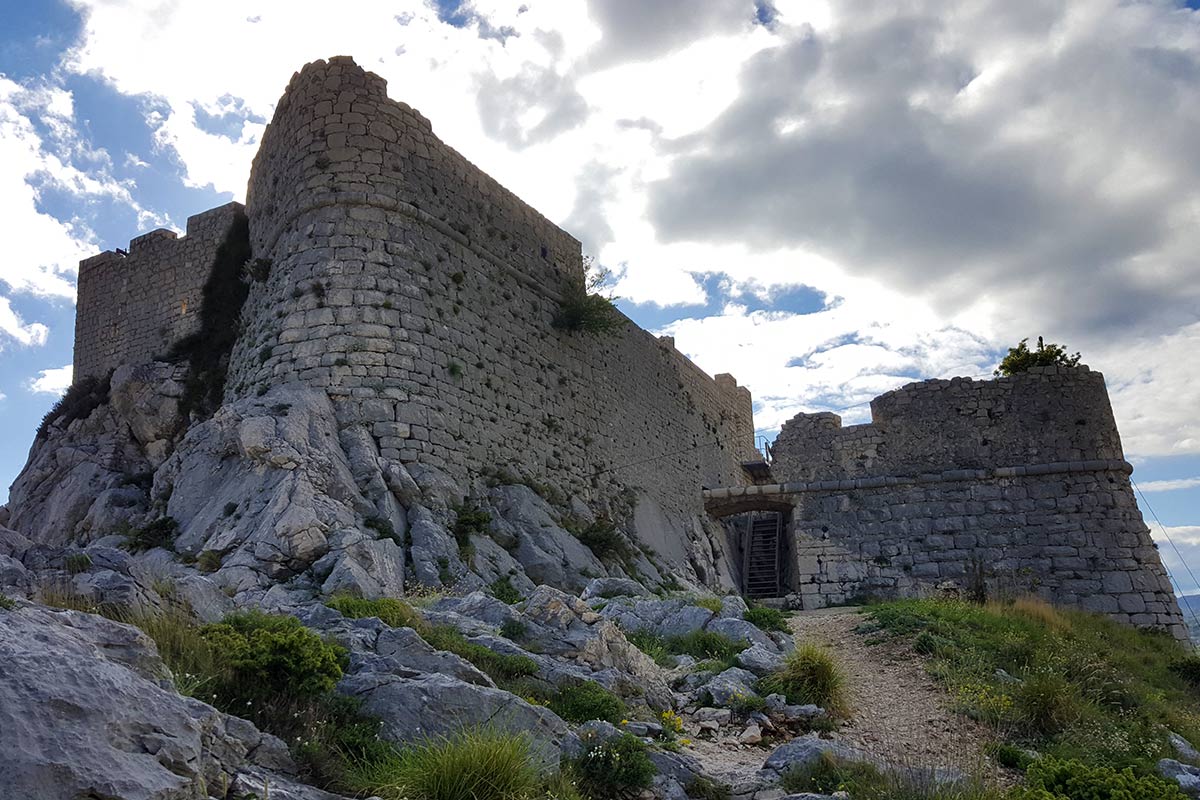
Credit: Omiš Excursion, Stari Grad Fortica
The vessels the Omiš pirates used are still an important part of Croatian maritime history, as they show how seamen were able to design and create vessels that had the exact characteristics they needed for their purposes. They were called Omiške strijele or Omiš Sagitta – “arrows” – an apt name considering they were extremely fast, agile, and they had a shallow draft, the key feature which allowed the pirates to ‘dart’ up the Cetina river if they needed to escape or hide quickly. These boats and this means of escape allowed them to trip up their enemies (almost literally) – the pirates built a wall in the river, just below the surface, hidden from the unsuspecting enemy, leaving only one passage broad enough for their own boats to pass. To make matters even worse (for the enemy that is), if any attacker did by chance happen to find the passage, they had no chance of getting through as the pirates used large chains to “close” the passage, which would damage the attacker’s boats.
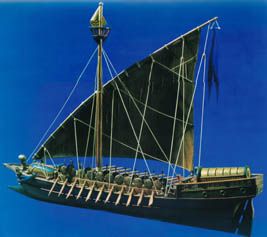
Model of the Sagitta; by local craftsman: Mirko Peričić
The boat was reconstructed, based on drawings found on the walls of the church on the island of Brač. For the past 10 years lovers of history have organized the reconstructions of the battle for Omiš in August, during which the brave Omiš pirates manage to defend themselves against the large Venetian ship with strong crew that came to occupy them.
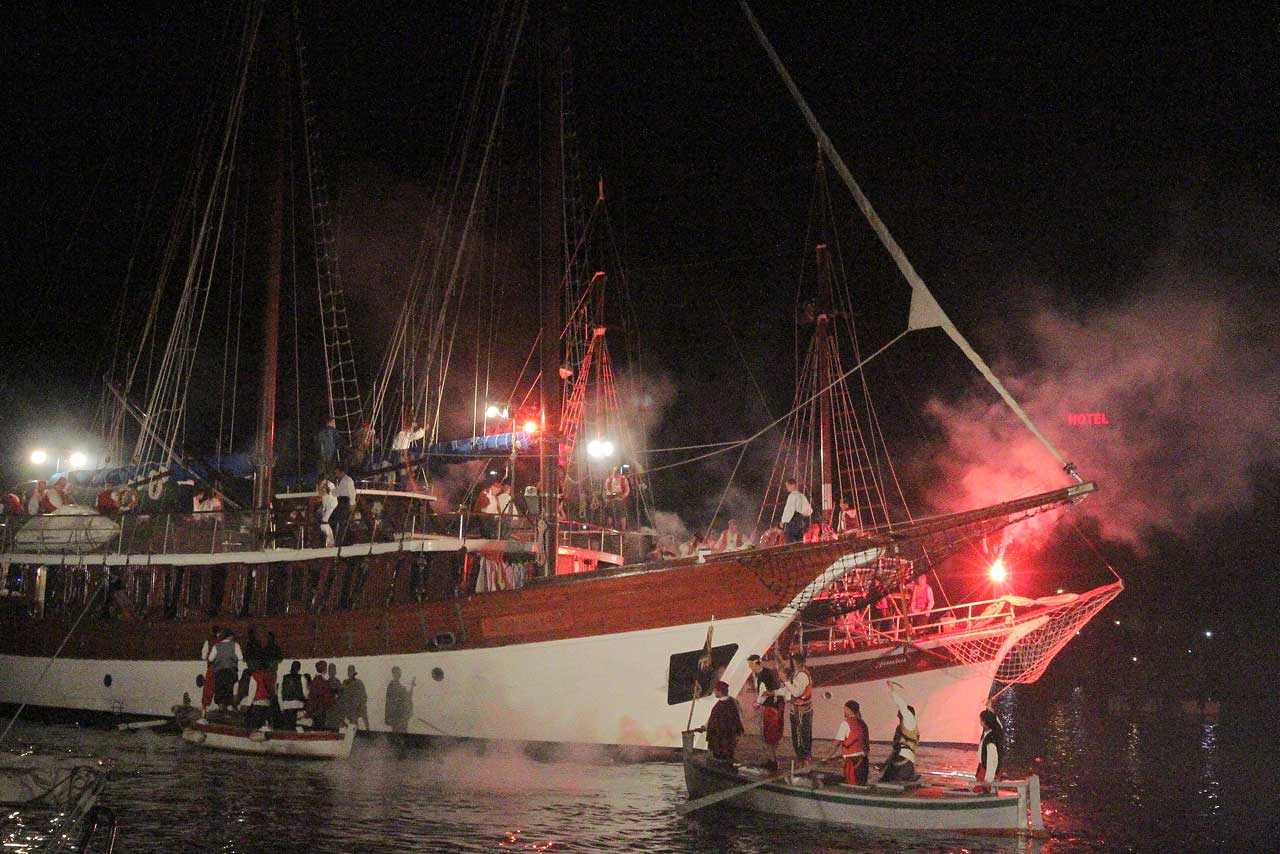
For more information about Omis, visit their Page here



